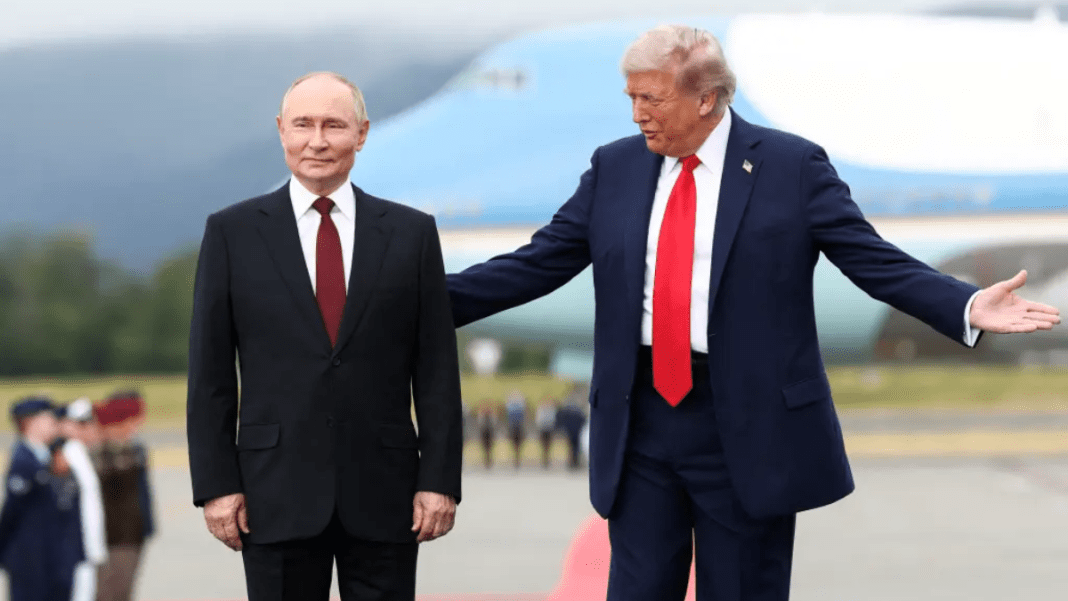Donald Trump is reportedly working on a controversial 28‑point peace proposal that would ask Ukraine to cede parts of its eastern territory to Russia. Sources familiar with the plan say that Trump’s envoy, Steve Witkoff, is quietly holding discussions with top Russian official Kirill Dmitriev. Trump promoted this initiative earlier this year, inspired by his Gaza peace plan.
A Bold 28‑Point Peace Plan
The proposal reportedly involves U.S.-led security guarantees for Ukraine and Europe in exchange for territorial concessions. Trump’s team believes that such a peace deal could elevate his international standing and potentially support a case for a Nobel Peace Prize, a prize that has eluded him despite his earlier claims of mediating peace in Gaza.
The 28-point framework reportedly aims to create a balance between satisfying Russian demands and offering Ukraine some form of security assurances. While the plan’s specifics have not been officially confirmed by either the White House or Russian authorities, multiple media outlets, including Axios and The Daily Beast, have reported on its general outline.
Peace Prize prompts Norway to consider tariffs and NATO demands if Trump is overlooked
What the Plan Says About Territory
The proposal reportedly centers on the Donbas region, which includes Luhansk and Donetsk. Under the plan, Russia would gain control of the majority of the territory, while Ukraine would retain only a small portion. The plan reportedly envisions turning the area into a demilitarized zone, which would limit the presence of Russian troops in practice but give Moscow effective control. For other contested areas, including Kherson and Zaporizhzhia, the plan proposes freezing the current lines of control, meaning neither side would advance or retreat further until new negotiations.
A striking element of the proposal is the suggested recognition of Crimea and parts of Donbas as Russian-influenced regions. However, Ukraine would not formally give up sovereignty, creating a complicated legal and political arrangement. Some reports also indicate that the plan would limit Ukraine’s ability to develop long-range weapons, aiming to reduce the possibility of renewed conflict in the future. Trump’s team has pitched this as a trade-off: Russia receives territorial influence, while Ukraine gains security guarantees backed by the U.S. and potentially European allies.
From Nobel lobbying to tariff backlash: twists in the Trump-Modi saga
While Russian officials, including Dmitriev, have expressed optimism that their position is being heard in these negotiations, the plan faces serious obstacles. Ukrainian officials reportedly received only vague information about the proposal and have expressed strong opposition to any forced territorial concessions. President Volodymyr Zelenskyy has repeatedly emphasized that Ukraine cannot cede land under pressure and that security guarantees must be meaningful and enforceable. European allies have also stressed that any peace plan must respect Ukraine’s sovereignty and territorial integrity.
Trump’s Nobel Prize Ambition and the Peace Process
Observers say that Trump is largely pursuing this peace plan to achieve personal goals, including gaining international recognition and possibly a Nobel Peace Prize. After he led the Gaza peace initiative, which brought a temporary ceasefire and the release of hostages, he suggested that the Nobel Committee unfairly denied him the award. His team views the Ukraine plan as another opportunity for him to secure a historic deal on the global stage.
The initiative has sparked controversy. Trump reportedly clashed with Ukrainian leadership over territorial concessions in the past, including a heated phone call with President Zelenskyy about surrendering the Donbas region, which Trump later denied. Analysts caution that without Ukraine’s full involvement, the plan could struggle to gain credibility.
Trump Says He Ended DRC-Rwanda Conflict — Global Bodies Yet to Confirm
Discussions on the plan are happening amid the ongoing war, with Russia continuing attacks and Ukraine resisting territorial losses. Trump’s envoy has reportedly met multiple times with Russian-aligned figures, while Trump publicly criticized Zelenskyy for blocking what he calls a path to peace.
If implemented, the plan could significantly reshape Eastern Europe, giving Russia influence over key regions. Ukrainian leadership has made it clear that ceding land is unacceptable, and Western allies warn that a deal without broad consensus could worsen instability rather than secure lasting peace.
